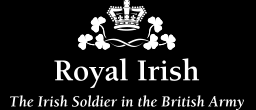American Civil War
The issues of slavery and territorial and political control had been present from when the British American colonies fought for their independence from the British crown in the late 18th century. The so-called 'Founding Fathers', despite their political proclamation in the Declaration of Independence in 1776;
'We hold these truths to be self-evident, that all men are created equal, that they are endowed by their Creator with certain unalienable Rights, that among these are Life, Liberty and the pursuit of Happiness.'
never resolved the matter of 'Slavery' as evidenced by the 'Mason-Dixon' Line, that division between Pennsylvania and Maryland that marked an internal US demarcation between the free states to the north and the slave states to the south. There was also the matter of government control exercised by the Federal government versus the autonomy of State governments.
The American Civil War was fought between 1861 and 1865 when eleven states seceded to form the (southern) Confederate States of America after the election of abolitionist President Abraham Lincoln in November 1860. The Northern 'Union' states fought to restore unity and to secure the new Western Territories from slave–owners. The Southern Confederate states fought the Northern States to assert what they believed to be their autonomous rights as enshrined in the Declaration of Independence.
South Carolina was the first of the southern states to secede. The Union occupied Fort Sumter, located on an island off the state's capital Charleston. This was where the first gun of the Civil War was fired when a ten-inch mortar, fired at 0430 hours on 12 April 1861, burst some 100 feet above Fort Sumter and began the Confederate bombardment that led to the fort's surrender at 1200 hours on 13 April. The Union garrison evacuated the fort on 14 April and the following day, President Abraham Lincoln called for 75,000 volunteers to help put down the rebellion. Lincoln would turn the efforts of the Union into a moral crusade after two years of war when he issued the Emancipation Proclamation on 1 January 1863, announcing ‘I do order and declare that all persons held as slaves, are, and henceforth shall be free…’. Congress, on 31 January 1865, in the last year of the war, would vote in the Abolition of Slavery with the 13th Amendment to the Constitution that would be ratified on 6 December 1865, after the end of the Civil War. But it would not be until the Civil Rights Act of 1964 that the legacy of slavery and the Civil War - segregation, discrimination and segregation - would be outlawed.
One of the Union gunners serving in Fort Sumter was John Thompson, who hailed from Coleraine on the north coast of today's Northern Ireland. He was one of the many Irish soldiers serving in both the Union and Confederate armies. In response to Lincoln's call, 144,000 Irishmen, or men of Irish descent, joined the Union Army. These were formed into units such as the 37th New York (Irish Rifles), General Thomas Francis Meagher's Irish Brigade, or Colonel James Mulligan's Western Irish Brigade with its headquarters in Fontenoy Barracks. The Medal of Honor, the highest Union award for gallantry in combat, was awarded to Second Lieutenant Martin Conboy (Irish Rifles) for his actions during the Battle of Williamsburg in Virginia on 5 May 1862. Conway had been born in County Roscommon on 11 November 1833.
The Confederates too had Irish regiments such as the 1st Louisiana (Tigers ) Special Battalion from New Orleans, a French-American city with 25,000 Irish-born citizens. The Irish-born population of the Confederate southern states was reckoned to be some 200,000. These men joined regiments such as the Sarsfield Rangers, the Louisana Irish Regiment, the Irish Volunteers, the Emerald Guards and Georgia's Irish Jasper Greens - to name but a few of the many. When these Irishmen were engaged against each other at battles such as Fredericksburg or Antietam, they often carried similar Colours with green backgrounds emblazoned with harps, shamrocks and mottos such as Erin Go Bragh and Faugh a Ballagh. The Union's Irish Brigade was present during the last of the fighting around Richmond when Confederate General Robert E Lee surrendered the Army of Virginia at Appomattox on 9 April 1865.





